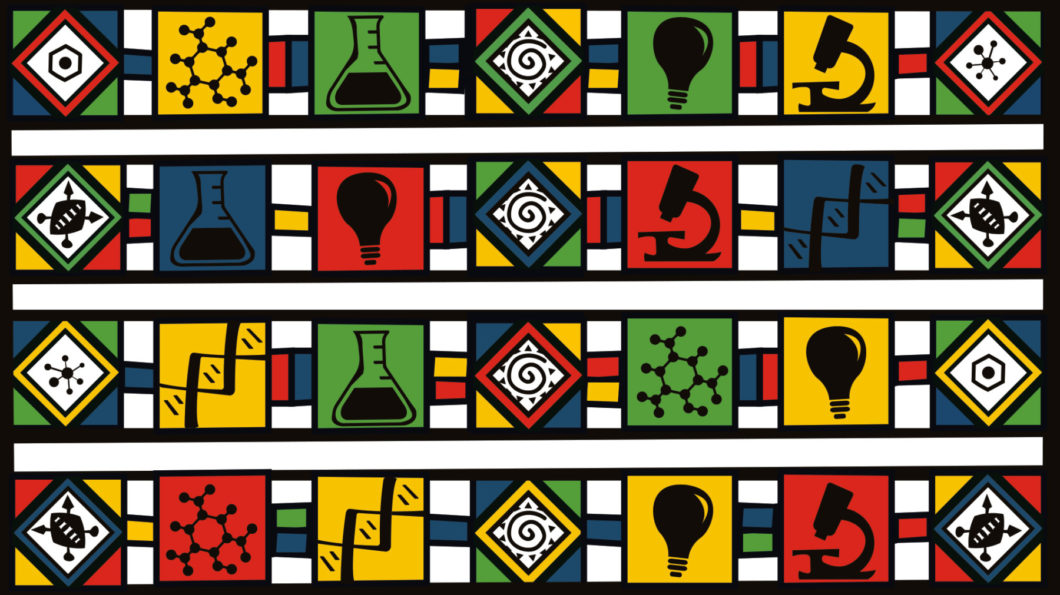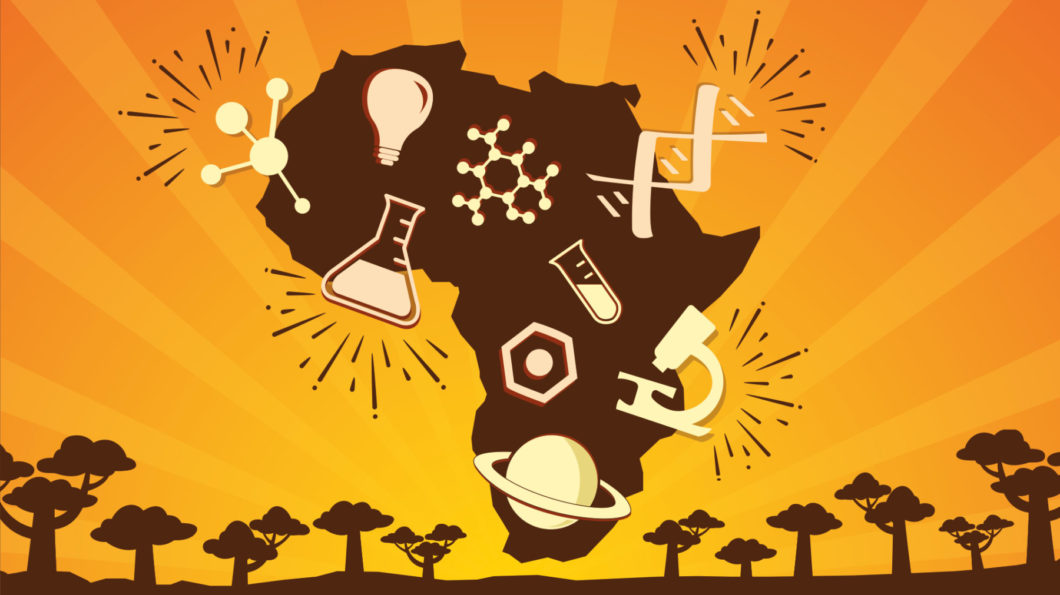
Last October, I received one of the toughest assignments of my freelance career. Scientists at the University of the Witwatersrand in Johannesburg, South Africa, had discovered the fossils of a new species of dinosaur, Ledumahadi mafube, unearthed in the mountainous Free State province. Weighing in at 12 metric tons and dating back nearly 200 million years, Ledumahadi mafube, Sesotho for “Giant Thunderclap at Dawn,” was one of the earliest Jurassic giants. Its fossils held clues about how even larger dinosaurs, the sauropods, evolved. My job was to write about the discovery for the South African website SciBraai—and to do so in my native language of Zulu.
But there’s no word for “dinosaur” in Zulu. Nor are there words for “Jurassic,” “fossilization,” or “evolution.” Despite the fact that Zulu—or isiZulu, as the language is called in South Africa—is spoken by some 10 million people, it simply doesn’t have the words for communicating science.
So my news piece wasn’t just a news piece. It was an attempt to tell a science story in a language that science overlooked—to help right a societal wrong. It was a small contribution among an increasing number that aim to help decolonize South African science writing. And it was rife with more pitfalls than I could have imagined. The task of describing science clearly, concisely, and accurately—already challenging in English—became exponentially more difficult in my native tongue.
South Africa’s Language Divide
In South Africa, language is inextricably linked to the fraught racial history of the apartheid regime. The point of apartheid was to separate people into four race categories: white, Indian, coloured (mixed race), and black (African native). Controlling language was one way to keep the races separate. Whites, mostly of Dutch or British ancestry, spoke Afrikaans or English; Indians spoke primarily English; coloureds mostly spoke Afrikaans; and blacks spoke one of nine indigenous tongues, often learning English as a second language. Frustrations erupted in 1976 after a policy was introduced to force students in township schools to be taught in Afrikaans in addition to English. The decree was resented by black students, who largely considered Afrikaans a language of oppression. Peaceful marches ignited into fierce protests when police shot into a crowd of unarmed, uniformed pupils, starting the infamous June 16 student uprising in Soweto.
Meanwhile, a different kind of revolution was taking place in South Africa’s science circles. For most of the 20th century, English was the country’s only language of science. But during apartheid, the government invested funds to develop translations and standardized lexicons necessary to retrofit Afrikaans for science communication. In the mid-1970s, Afrikaans was transformed into a language of science—a privilege never given to South Africa’s indigenous languages.(Indeed, only a handful of languages in the world have been modified this way during the past half century.) To this day, science examinations in public schools are conducted only in English and Afrikaans.
That linguistic relic of apartheid has put today’s native Africans in a peculiar position. As it stands, a lot of us can articulate, in our own languages, the issues facing communities; but we code-switch when talking about science and how it should solve those issues. We might speak in Zulu about the pain caused by South Africa’s alarmingly high HIV-infection rates, but if we want to explain to someone that their CD-4 counts are low, or that antiretroviral drugs could help prolong their life, we inevitably switch to English.
In his 1986 book Decolonising the Mind, Kenyan writer Ngũgĩ wa Thiong’o advocated for a new paradigm. He argued that African natives should enrich African languages by making them relevant for the world—and that we should enrich our own minds through indigenous language. That sentiment was echoed by science communication researcher Marina Joubert in a February 2018 article at The Conversation titled “Science Needs to Start Speaking to People’s Everyday Lives in Africa.” Joubert called for decolonizing the science vernacular, and noted a 2016 study that found that high school students better understand and engage with new material when they are taught in their home language.
The effects of South Africa’s language divide often reverberate through adulthood. And the language barrier has alienated large swaths of South Africa’s population from the scientific enterprise. “The reality is that many South Africans see the country spending money on telescopes (or accelerator mass spectrometers or ocean robots) and do not see how they could be useful on the ground, how they use African knowledge, and what direct relevance they have to citizens’ lives,” wrote Sarah Wild and Linda Nordling in a 2016 op-ed (paywalled) in the South African newspaper the Daily Maverick.
As sociology professor Kwesi Kwaa Prah put it in a 2007 report to the Foundation for Human Rights in South Africa, “Without literacy in the languages of the masses, science and technology cannot be culturally-owned by Africans. Africans will remain mere consumers, incapable of creating competitive goods, services and value-additions in this era of globalization.” It was with Prah’s dream in mind—the dream of reclaiming cultural ownership of the thought-language of science—that I set out to tell an authentically Zulu story about the “Giant Thunderclap at Dawn.”
Bringing Science to the People
I was far from the first reporter to take on the task of reporting on science in an indigenous African language. For the past two years, The South African Agency for Science and Technology Advancement (SAASTA) has been placing indigenous-language-speaking science journalism interns in local media outlets around the country. One of those interns, Itumeleng Mahloboga Sebola, reports for the community newspaper Seipone News in Sepedi, a language spoken by about 5 million South Africans. She says indigenous-language reporting is a valuable way to demystify science. “A lot of people see science as this magical thing that happens,” she says. “If they get to understand that there is no magic, they are then able to love science and get their children to choose science in school.”
Another SAASTA intern, Lihle Dlova, does an hour-long, weekly science-news show in Xhosa for Kumkani FM. She says the indigenous-language program, broadcast in the primarily Xhosa-speaking Eastern Cape province, was born of popular demand. “When I reported only in English I never got a response from listeners,” she says, but that changed when she switched to Xhosa.

The multi-campus University of KwaZulu-Natal has also taken a lead in making it possible to communicate science in indigenous tongues. The university’s research news platform has a Zulu-language section, and the school has developed a lexicon app for android phones that has a collection of science terms in Zulu. Sakhile Khulekani Gumede, a language practitioner, was involved with the university’s early efforts to translate science books into Zulu. As part of the project, he created a list of translations (separate from the lexicon app) that he hopes will be standardized by science and language experts.
Gumede laments the vast differences between English and Zulu, which he says complicate the task of translating science terms. “English is very flexible … but in Zulu we lack such flexibility,” he says, noting that in Zulu culture it is frowned upon to borrow too many words from other languages. He adds, “There might be a term where you don’t know where to begin translating, such that translating it into isiZulu without making a paragraph presents quite a challenge.” For instance, to write about DNA—a word for which there is no Zulu counterpart—a writer would have to go back and explain terms like molecules, cells, and genetic codes, which themselves lack Zulu counterparts.
When I started working on my story I was already familiar with these projects, and while it was reassuring know that other South African science journalists were attempting to navigate the same terrain that I was, this much was clear: There was no roadmap. When it came to writing about Ledumahadi mafube, I would have to find my own way.
Finding the Right Words
I decided early on that instead of taking the easy road—writing a first draft in English and then translating it to Zulu—I would conceive my dinosaur story in Zulu. English has such a different tone to it that Zulu speakers can detect when a text was originally written in English, the same way you could detect if, say, a TV instruction manual was translated from Chinese.
I started by copying the important text of the journal article and highlighting the words and phrases that lacked Zulu equivalents. But what to do with those terms? I could make up new Zulu names that no one has ever seen. I could use precious literary real estate to explain their underlying concepts. Or I could simply tack the prefix “i-” onto them, as has become a convention for dealing with hard-to-translate terms. Ultimately, I decided to invent some terms, augment others, and—when those approaches wouldn’t do—provide explanations.
I found that the Latin and Greek roots of scientific terms translate fairly easily to Zulu, since the languages all have similar grammar. A Latin or Greek word made up of a prefix, root, and suffix will usually map directly to a sentence in Zulu. For example, the Latin word quadruped translates to Zulu as Ukuba mlenze mine (“to be legs of four”).
I encountered trouble, however, with the word dinosaur, which comes from the Greek for “terrifying lizard.” The term is a misnomer: Many dinosaurs bear little resemblance to lizards, and some ancient animals that looked like terrifying lizards, such as the dimetrodon, are actually more closely related to mammals than to dinosaurs. I didn’t want to introduce into Zulu the same misconceptions that already plagued so many English speakers.
I decided to go with the more general but more accurate term isilwane sasemandulo, Zulu for “ancient animal.” Although I would’ve preferred more specific language, the term worked for the purposes of my story. I described Ledumahadi mafube as a creature of elephant-like size and shape, with a head and neck resembling a stiff, tiny-headed snake and a tail resembling that of a monitor lizard. (I promise, it sounds epic in Zulu.)
Other seemingly simple words—evolution, fossil, planet—required similarly careful treatment. In the final story, I spent as many words explaining the meanings of scientific terms as I did describing the discovery itself.
Reclaiming Science Storytelling
In some respects, a fossil find was the perfect subject for my first foray into reporting in Zulu. That’s partly because South Africa is rich with paleontological finds and research. But also, paleontology is a storytelling science—one that lends itself to imaginative tales about origin and how things came to be. Such stories are a staple of Zulu culture. To Zulu speakers encountering dinosaurs through the lens of their native tongue for the first time, the ancient creatures seem like mythical beings straight out of a fireside folk tale.
So in concluding my story, I did something I would not have done for an English story: I called for readers to consider the many stories that can be told from the paleontology being done in their own backyard. I asked them to take it upon themselves to be part of the storytelling, as is our way as Zulus: We remember our history through spoken word and song.
The hope is that, someday, South African journalists won’t have to struggle to find the words to talk about science in our native tongues—that we can tell science stories that matter to Africans in their own languages. Who knows, maybe one day there will be fireside stories about Ledumahadi mafube, accompanied by thunderclapping drums in the dawn.
Translations courtesy of Sibusiso Biyela

Sibusiso Biyela is a South African science communicator and journalist. He is currently interested in using digital media to communicate science, and he has recently embarked on efforts to decolonize science communication using indigenous languages. He can be found making groan-inducing science jokes on Twitter at @AstroSibs and some of his work can be found at http://www.scibraai.co.za.


